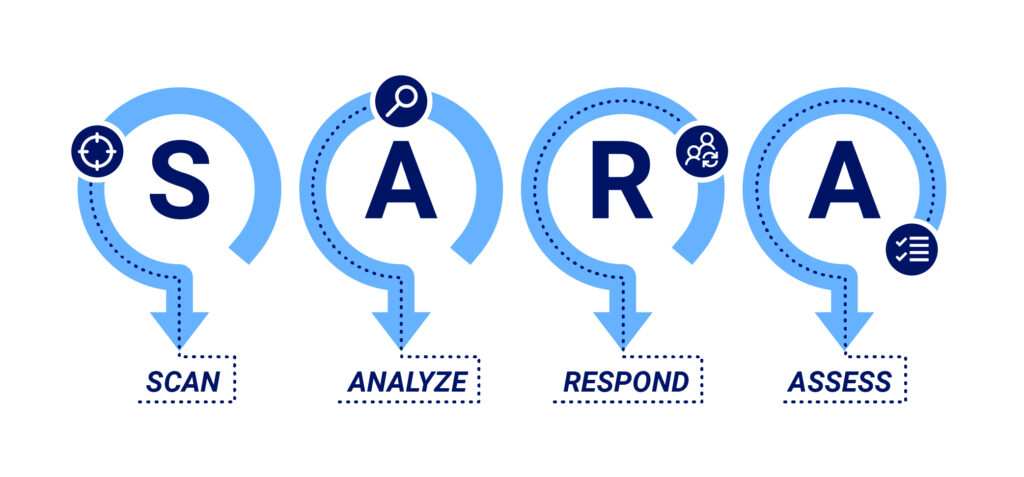
Just about everyone in law enforcement has heard of the S.A.R.A. model for solving crime problems, but few know how to force-multiply it for maximum impact.
As a reminder, the evidence-based approach called Problem-Oriented Policing is based on the SARA model and the acronym stands for:
- Scan
- Analyze
- Respond
- Assess
Most commanders, investigators, and crime analysts do a great job of defining the problem through the Scan stage and studying the problem through the Analysis stage to come up with an operational response. However, it’s at the Respond and Assess stages that effectiveness begins to break down reducing the impact of success.
So, what causes the break-down?
- How the Response is Communicated – Most agencies rely on email as their main communication platform. This means higher priority emails on a problem-based policing project for example are mixed in with emails. Also, disseminating information about problem-oriented policing projects often require large files of maps, photos, and videos which strain the limits of email. With officers receiving so many emails and studies showing that less than 10% of an officer’s daily in-box of emails are open, read, and acted upon, you can easily see how email is not the most effective way to communicate problem-oriented policing projects and information. Having a communication platform that visualizes for officers the crime projects they are responsible for and displays maps, photos, and videos associated with the project, prevents things from slipping between the cracks of email and improves the accountability of the Response.
- Lack of Collaboration – Passing on updates and assigning tasks on a crime project is challenging with officers working rotating shifts and specialty units operating within information silos. Traditional shift briefings can be helpful, but attendance may not be consistent and competing priorities leave little time to focus on specific crime projects. Keeping up to date on what’s been done, any new developments, and what needs to be done next is extremely challenging without a systematic way for officers from Patrol, specialty units like Narcotics and Code Compliance, crime analysts, and supervisors to share information in a collaborative space that is accessible anytime, from anyplace.
- Pulling data together to Assess the project – Let’s say a goal was set to reduce calls for service at a problem location or traffic collisions at a busy intersection by 40% within 2 months. Many agencies are challenged with assessing exactly what actions were completed, why they missed (or made) the goal, and how to adjust efforts if they missed the goal so they don’t miss again on a future deployment. Without a central location of information on who did what and when during the project, it’s hard to assess if the miss was due to a lack of resources, lack of training, lack of collaboration, lack of accountability, etc.
Solution:
To get the best results out of the SARA model, provide your agency and officers with a crime reduction platform like SmartForce® designed specifically for law enforcement to maximize the R and A stages. For more information or to get a demonstration of how SmartForce® maximizes the Response and Assessment stages of problem-oriented policing give me a call or send me an email.
